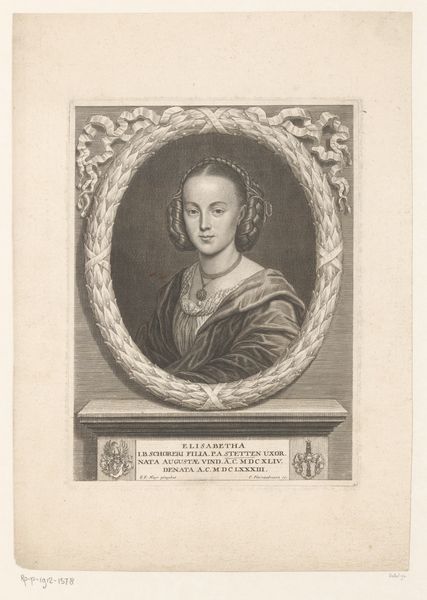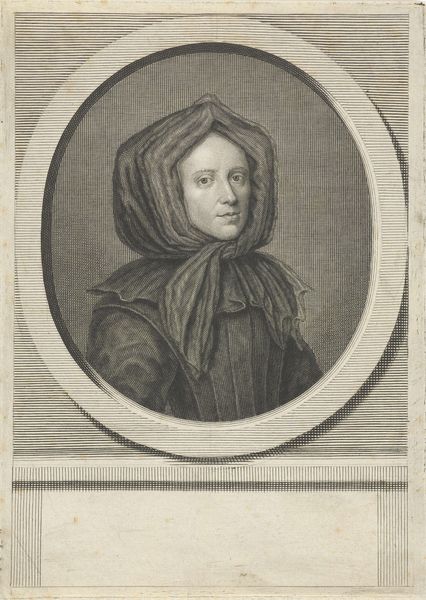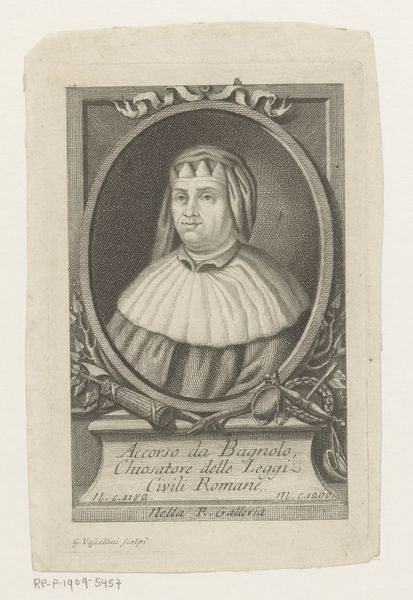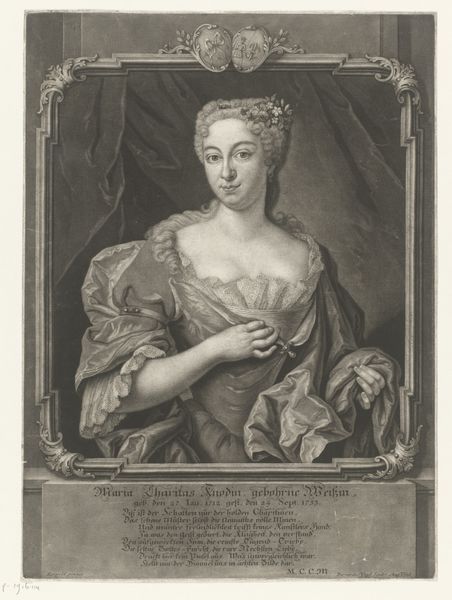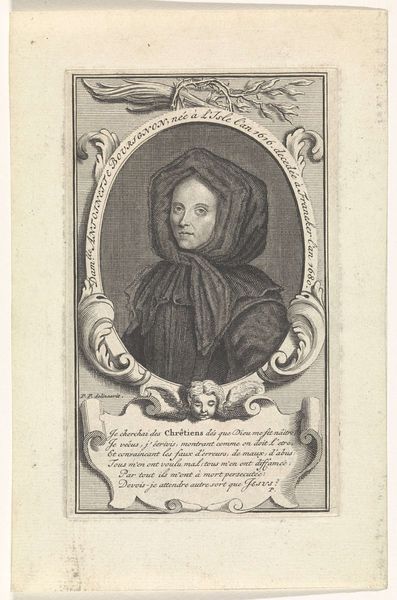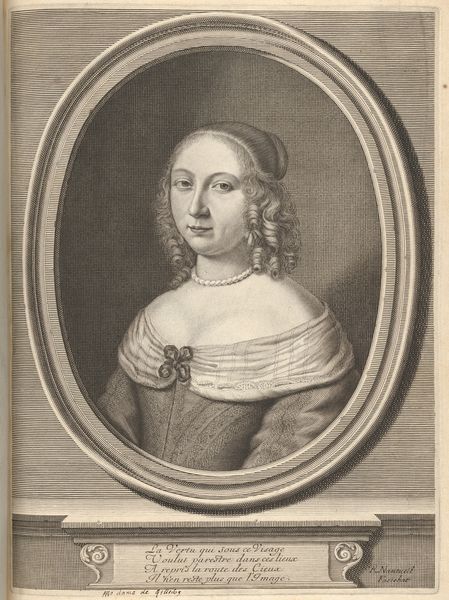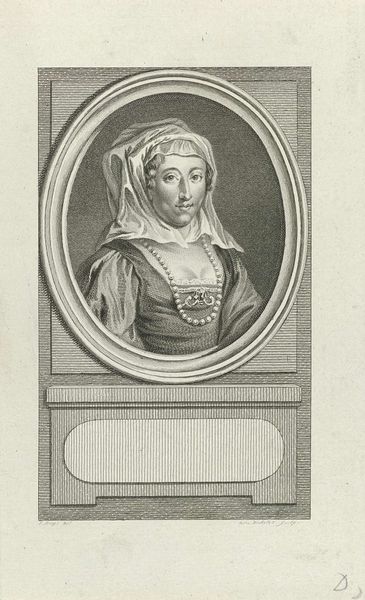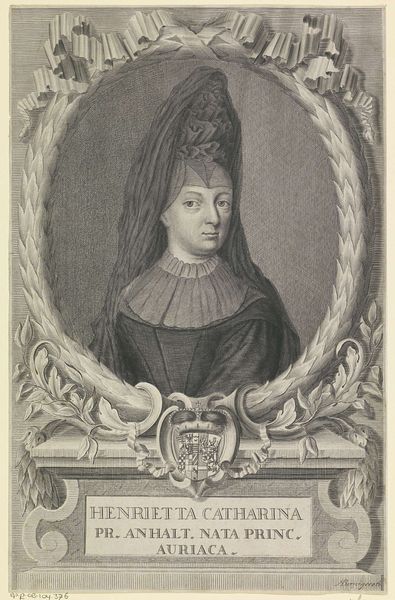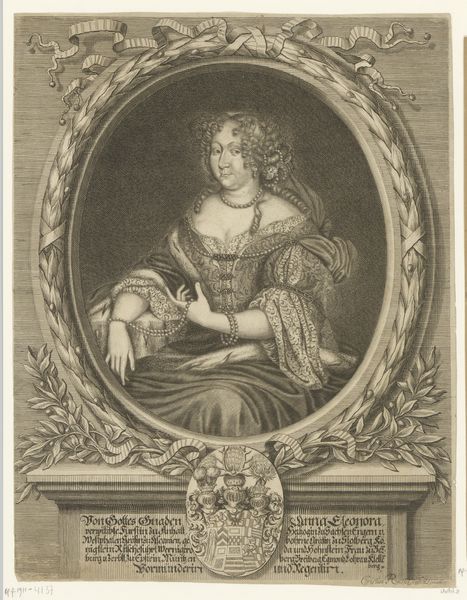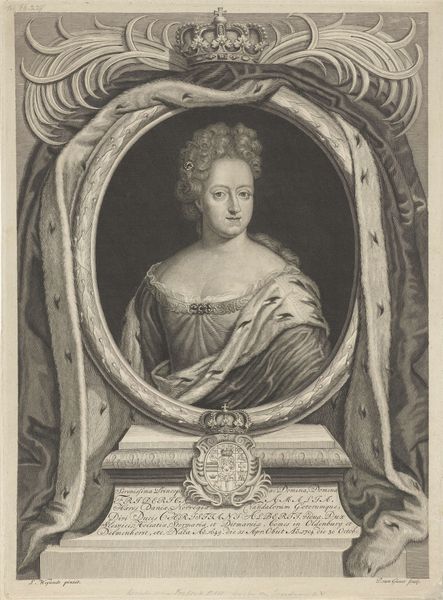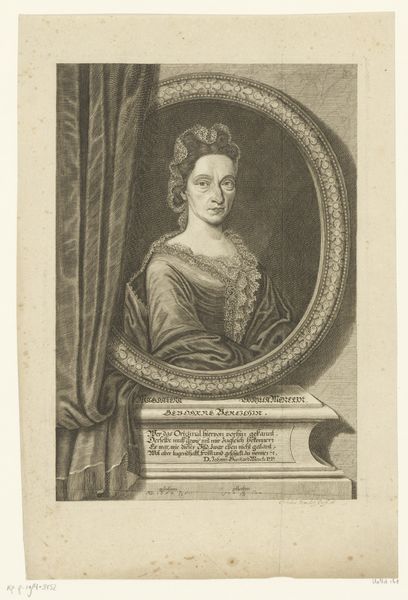
print, engraving
#
portrait
#
aged paper
#
baroque
# print
#
old engraving style
#
figuration
#
line
#
academic-art
#
engraving
Dimensions: height 215 mm, width 159 mm
Copyright: Rijks Museum: Open Domain
Editor: So here we have a portrait, "Portret van Susanna Elisabeth Tabor," made sometime between 1682 and 1693 by Elias Hainzelmann. It’s an engraving. I find it kind of somber, and there’s so much detail in the framing laurel leaves. What stands out to you? Curator: The portrait sits within a visual language steeped in history and tradition. Notice the oval frame, a common symbol in portraiture suggesting timelessness and containment. The laurel wreath speaks of honor, victory, perhaps even immortality. Editor: So the frame isn’t just decorative? Curator: Not at all. It contributes to how we read Susanna. Ask yourself, why those specific symbols? What cultural associations were attached to them at the time? Even the inscription below—do you recognize its function? Editor: It seems to be a description of her birth and death. Almost like a commemorative plaque? Curator: Precisely! It freezes a moment in time, elevating her to a level of historical importance. This wasn’t just a likeness; it was a carefully constructed image designed to convey status, virtue, and remembrance. Each symbol contributes to the narrative. Editor: So reading the symbols is like unlocking a hidden story. Curator: Indeed! And it is a story society wishes to tell and retell, using the visual tools available at the time. Editor: I see so many layers now. The engraving isn’t just a picture, it's a statement! Curator: Exactly. Consider how later artists built upon—or challenged—these conventions to create their own meaning. That’s the ongoing dialogue of art history.
Comments
No comments
Be the first to comment and join the conversation on the ultimate creative platform.
